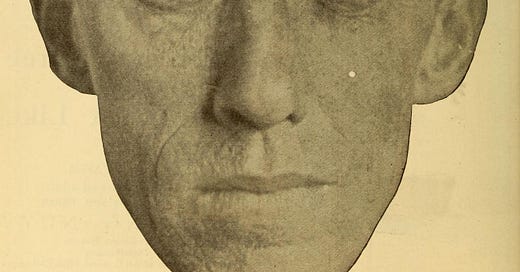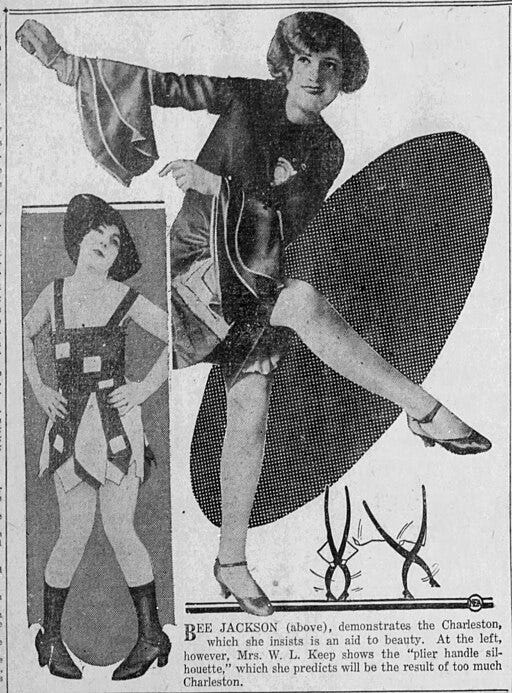In the interest of being open to what the universe offers, credits go to my daughter who gave me this week’s topic: write about the “bee’s knees” she suggested, as we giggled on a road trip in mutual adoration of and befuddlement over that expression. Do bees even have knees? Where the heck did that phrase come from? Enter another round of my favorite thing to do: follow a rabbit hole (beehive?) to the land of interesting obscura.
The expression means excellent, the height of excellence, the finest quality.
That’s the bee’s knees!
Most say it came into use in the 1920s when those fun flappers of the Jazz Age seemed to have a habit of comparing anything awesome to an animal-human hybrid, or dress their animal in human clothes and attributes. Other expressions that all meant the same thing include:
sardine’s whiskers
eel’s ankle
clam’s garter
cuckoo’s chin
gnat’s elbow
elephant’s wrist
elephant’s arches (elephants seem especially popular!)
duck’s quack
leopard’s stripes
The possibilities are endless—what a giddy time it must have been to be alive, dancing/drinking with fringe and a bob, and spitting out odd pairings from an anthropomorphic word blender.
But the plot thickens, as many such expressions, including the bee’s knees, are directly attributed to the creative output of Tad Dorgan, popular cartoonist of the Indoor Sports series of that era, which includes:
cat’s pajamas
flea’s eyebrows
possibly “hot dog” (this is contested)
canary’s tusks
yes, we have no bananas (which became a song)
dumbbell (for stupid person)
for crying out loud
cat’s meow
applesauce (nonsense)
cheaters (eyeglasses)
skimmer (hat)
hard-boiled (tough and unsentimental)
drugstore cowboy (loafer or ladies’ man)
nickel-nurser (a miser)
as busy as a one-armed paperhanger (overworked)
Tad, who for his final years was a shut-in with heart trouble happily cartooning from home in Great Neck NY, died on May 2, 1929 in his sleep—really all quite idyllic if it weren’t for the heart trouble and the death part. He received the posthumous honor of being named by W.J. Funk of the Funk and Wagnall’s dictionary company at the top of the list of the 10 “most fecund makers of American slang.” How much Tad absorbed from the cool club kids and ran with, or vice versa with how much he affected hipster lingo, I guess we’ll never really know. Some of these phrases hold up better today than others. Cat’s pajamas, yes. Flea’s eyebrows, not so much, but why not try for a revival?
Word nerds of the world continue to dispute the deeper origins of the bee’s knees, which seems to be the first creature-human pairing that started this craze. In this lively Guardian forum, Flip from Frankfurt says “I suspect that it’s a comic corruption of ‘business,’ as in the English phrase ‘it’s the business,’ meaning that it’s great.” Ogins in Greece says, “The bee’s knees is actually a development from something that was originally stated as ‘The be all and the end all of everything.’ This being rather long, was shortened to ‘the B’s and E’s’ which eventually became ‘the bee’s knees’.” Steve of Vienna says it’s connected to the fact that the knees are where the valuable pollen is carried. And then Laury of England shares a reference to the knees of Bee Jackson, the dancer credited with the introduction of the Charleston to New York’s Broadway—eureka, literally Bee’s knees!
Len Rome’s Daily Feature of Little Known Facts goes further back in time to propose the expression first surfaced in the 18th century to note something so good it didn’t exist. Such as a boss asking his apprentice to “pick up a left-handed hammer and a bag of bee’s knees.” Only later did it become common parlance in the 1920s along with other fun expressions he notes such as:
kluck (a dumb person)
dumb kluck (dumber than a kluck)
pollywoppus (meaningless stuff)
fly-paper (a guy who sticks around)
Len attests, bees do have knees, by the way:
“They do, they have six leg sections and each is connected by a ball joint. Call it a knee if you want.”
This informative article at buzzaboutbees.net agrees and even offers knee diagrams if you want to go deeper into the anatomical truth of this.
But don’t use “bee’s knee” singular, that’s something else—apparently that would mean “small.” So small that it disappeared from use.
The buzzaboutbees article is great in its fusion of etymology and entomology (the study of words and insects). “The be-all and end-all” Ogins noted above was used by Shakespeare’s Macbeth in 1605 when contemplating the assassination of the King of Scotland, but this seems like a stretch to morph into the bee’s knees. The bee-buzz author is equally skeptical on the “business” theory, a phrase used in Cockney slang and in the U.S., likely also unrelated to knees. Or, could either be an example of a Mondegreen, originating from the mishearing of another phrase. The article cites the first possible use “back to a spoof report from August 1906, in the West Coast Times in New Zealand. The paper reported that within the cargo carried by the S.S. Zealandia there were seven cases of ‘bees knees’, along with a ‘quantity of post holes.’” Then they are other examples of this usage, deliberately misleading/befuddling with a reference to something that doesn’t exist, “such as asking a person to fetch striped paint or a sky hook.”
Why do bee’s knees in particular make the leap into 1920s common vernacular in such a different and dramatic (and enduring) way? Mondegreen, intentional, or perhaps a double entendre reference to female anatomy buried there somewhere as it always is? Unknown! The author speculates as well about that dancer Bee, world champion no less, and adds a few other timely expressions to this great list:
ant’s pants
caterpillar’s kimono
elephant’s instep
bullfrog’s beard
Whatever the origins, it’s a fun exploration and such an interesting time when this sort of language seems to explode with creativity and play. We have so-called “influencers” nowadays on social media who share viral TikToks and start nude-colored underwear crazes, but I don’t know if anyone can really claim getting their name on a lexicon of an era the way Tad Dorgan did.
The only plot as thick as the derivation of bee’s knees is the origin story of Tad’s becoming a cartoonist and how many sacrificial fingers that entailed. From the Wikipedia entry on his life, Tad’s art career begins with a terrible accident:
When Dorgan was a child, he lost several fingers of his right hand in an accident whose details are unclear; Cosmopolitan writer O. O. McIntyre—a friend of Dorgan’s—wrote that when Dorgan “was eight, he was fooling around on a house-moving job and attempted to ride a shovel on a rope that was propelled by a big pulley. He turned his head for a second and his right hand was caught in a pulley, crushing off four fingers of that right hand, which was reduced to a thumb and a piece of knuckle.” Henry Morton Robinson’s description of the incident is largely the same, except that he said it took place when Dorgan was nine.
Other accounts of the incident exist, however: Westbrook Pegler—who was likewise a friend of Dorgan’s—wrote that Dorgan had lost “the first two fingers and half of the palm of his right hand” in an incident with a buzzsaw. Comics historian John Adcock has noted that, although there were “dozens of different stories,” only McIntyre’s version was in accordance with the statement on Dorgan’s draft card that he had “all fingers except thumb off of right hand.”
After the amputation, Dorgan took up drawing for therapy. When he was 14 he joined the art staff of the San Francisco Bulletin.
From Tad’s fingers to the bee’s knees and the flea’s eyebrows—words and body parts in the dizzying blender of life.







That's very interesting and entertaining! I've always thought the phrase 'the bees' knees' refers to the pollen that bees collect and store on what would be the knees of their back legs if they had knees. When a bee has collected a lot of pollen she seems to have very prominent (usually yellow) knees
Loved it!!!